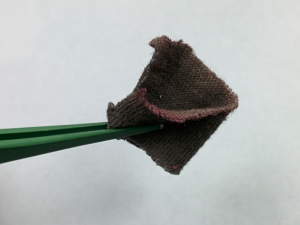 If you’ve ever war-gamed some of your survival strategies in the wilderness, there’s a good chance that you’ve run into several challenges with your gear, especially in regards to space and weight. There’s only so much you can carry on your back, and if you take too much you’ll be completely exhausted in no time. So it’s important to cut down the size and weight of your gear in any way you can, while still maintaining a diverse selection of survival tools.
If you’ve ever war-gamed some of your survival strategies in the wilderness, there’s a good chance that you’ve run into several challenges with your gear, especially in regards to space and weight. There’s only so much you can carry on your back, and if you take too much you’ll be completely exhausted in no time. So it’s important to cut down the size and weight of your gear in any way you can, while still maintaining a diverse selection of survival tools.
However, if there’s on thing that tends to dominate both the space and the weight of your camping/bug out bag, it’s probably your shelter. Between the tent, sleeping bag, and sleeping pad, you might have anywhere between 25-50% of your carry weight dedicated to sheltering. Fortunately there are certain technologies on horizon that may be poised to replace the traditional tent/sleeping bag combo with something significantly lighter.
Recently, several researchers from Stanford University have been trying to find new ways to reduce home heating costs, which amount to a large percentage of global energy use. They eventually settled on the same thing you might do if you were trying to cut back on your heating bill. Just throw on a sweater and some long johns, and laugh all the way to the bank. Except in this case, that sweater would be coated in silver nanowires, and would be several times warmer than wool.
The main advantage of the AgNW-coated clothing is that it reflects over 90% of an individual’s body heat (i.e., infrared radiation) back to the individual. This reflectance is much higher than even the warmest wool sweater, as the average clothing material reflects back only about 20% of body heat.
This increase in reflectance is due to differences in the materials’ emissivity, which is a measure of heat radiation. Low-emissivity materials like silver, which has an emissivity of 0.02, emit less radiation and so provide much better insulation than high-emissivity materials like common textiles, which have an emissivity of about 0.8.
Of course, wearing clothing made completely of silver would be impractical and uncomfortable, not to mention expensive. A main reason for this discomfort is that silver, like all metals, is not breathable. For example, Mylar blankets, which are made of aluminum and plastic, are extremely warm but are not vapor-permeable, causing moisture to accumulate on a person’s skin.
The new AgNW-coated clothing, on the other hand, is breathable due to the nanowires’ porous structure. The large spacing between nanowires of about 300 nm offers plenty of room for water vapor molecules, which are about 0.2 nm, to pass through. The 300-nm spacing is still much too small to allow body heat to pass through, since human body radiation has a wavelength of about 9 µm and so interacts with the nanowire cloth as if it were a continuous metal film, and is reflected.
Obviously, having clothing like this would be incredibly useful. Imagine having a combination of long johns, socks, shirt, and gloves made of this material. You would have something that is just as warm as a tent and a sleeping bag, but it could fit in a much smaller space and weigh next to nothing.
And if you happen to find yourself in some frozen wasteland that is cold enough to challenge this material, don’t sweat it. Since silver is an excellent conductor, it’s pretty easy to heat up. They found that a .9 volt charge of electricity is enough to raise the temperature of the material to 38 degrees Celsius. That kind of voltage can be easily reached with most batteries.
Furthermore, this material might someday be cheaper than wool or polypropylene. It only takes a single gram of silver to coat an entire outfit, so it’s just a matter of reducing the fabrication costs.
The only thing they don’t mention is the sanitation issue, or the lack thereof I should say. Silver has antibacterial properties, so it probably won’t need to be washed very often. I don’t know if you’ve ever stopped to smell a polypro or polyester shirt after a long camping trip, but it’s safe to say that this would be a huge improvement.
So keep your eyes peeled for this technology. Someday you’ll be able to replace a ton of insulating gear with it. And personally, as an avid backpacker and a prepper, I can’t wait for this to go to market.

Like there will BE a market by that time.
Would these garments reduce the heat emitted and picked up with heat-sensing equipment, making the wearer less “visible” to enable better concealment?